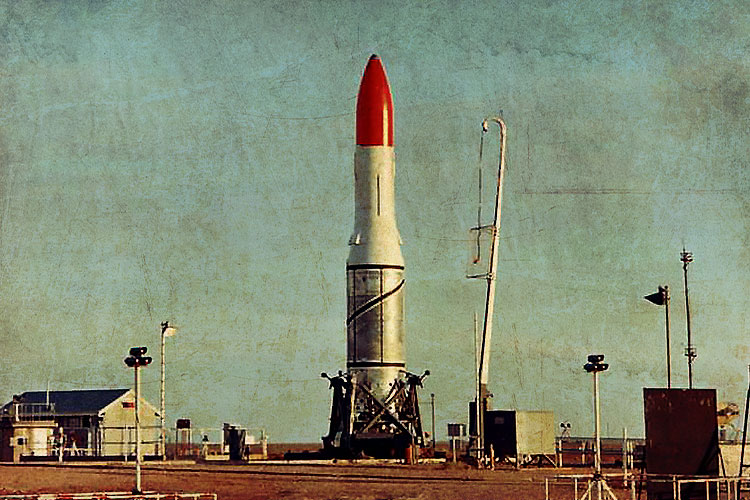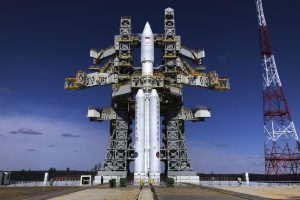The Main Rocket Launch Types: Who is in Charge of Peaceful Space?
5th Aug 2021
The history of peaceful space exploration, possible due to new launch vehicle types, is only a few decades old, but it is full of drama and tremendous success. The first theoretical project was the “Lunar Rocket” of the British Interplanetary Society in 1939. The project aimed to create a carrier capable of delivering a payload to the moon, but the Second World War interfered.
As a result, the German V-2 rocket, with which the Nazis tried to destroy London, gave rise to today’s types of launch vehicles. On its basis, attempts were then made to create the first civil carriers – different types of launch vehicles unseen before. Today, few people know that Britain could have become the first country to send a man to space, but after the war, the UK simply lacked money – just like it lacked the money to develop the Black Arrow programme in the 1970s. Today, however, the prospects of British rocket building are obvious.
History of International and British Rocket Building

The USSR and the USA’s success in the rocket and space industry prompted other countries to start their own research. France, China, and Japan have succeeded in creating their own types of launch vehicles. The British government decided to curtail the Black Arrow program and focus on small satellite production. The country did succeed in the latter. Today, Glasgow is the European leader in small satellite production.
The only launch of the Black Arrow light rocket was made on October 28, 1971, from the Australian spaceport Woomera, when the British artificial satellite Prospero was deployed into orbit. Sadly, up to this day, this is the only’ fully national’ launch.
In the meantime, other countries were actively building spaceports, thinking of new types of satellite launch vehicles, creating shuttle launch systems, and coming up with ideas for “air” and “sea” launches. However, with the development of new technologies and the private space sector, these expensive infrastructure projects gave way to different types of launch vehicles – cheaper and more efficient ones.
One only needs to look at Elon Musk’s creations to understand how much humanity has stepped forward in its effort to conquer space.
Launch Vehicle Types: Horizontal and Vertical

By and large, a rocket can be sent into space from any suitable platform. What’s important is the optimal combination of the installed power, the precise choice of the launch time and angle, orbit calculation, payload, and other parameters.
In principle, rocket launches are divided into two types:
- Vertical ─ traditional one and, until recently, quite expensive. It takes tremendous power to overcome the Earth’s gravity. The carrier must have multiple stages, which makes it very heavy, complex, and expensive.
- Horizontal (using an airplane) is a more accessible launch type, as it is less demanding in terms of launch location and methods. For traditional launches, the weather is still a problem. Airplane launch at high altitude is advantageous, especially over the ocean, as it eliminates the possibility of discarded stages falling into densely populated areas.
As we can see, the main requirements for types of satellite launch vehicles are rocket technical parameters and launch costs. Here, private companies are ahead of governments, as they have a more flexible approach to the client and use the latest technologies, allowing them to reduce rocket manufacturing costs and make their first stages reusable.
Modern types of launch vehicles
Today, the undisputed leaders of launch vehicle types are:
Vertical Heavy Rockets
- SpaceX Falcon 9, Falcon Heavy. Payload to LEO up to 23 ton, Heavy – up to 64 ton. ULA Atlas 5 – 18.8 ton to LEO.
- ULA Delta Heavy. 29 ton.
Vertical Light Rockets (payload mass to 1000 kg)
- Electron (Rockeet Lab, New Zealand-USA)
- Long March (China)
- Vega (Arianespace, ESA).
Air Launching Rockets

Here, the results are much more modest, even though many countries and companies have been developing these types of satellite launch vehicles for a long time.
The most notable recent project is Virgin Orbit Launcher One. The company is registered in the US but has British roots as its owner is a British businessman Richard Branson. Earlier this year, Virgin Orbit successfully launched, for the first time, its LauncherOne rocket from a cargo-modified Boeing 747, which then put ten NASA satellites into orbit.
However, Virgin Orbit is not the first one in this class. A similar American project Stargazer Pegasus has been in use for over 20 years. To date, 44 Pegasus-H and Pegasus-XL rockets have been launched from Boeing B-52 and Lockheed L-1011 TriStar aircraft. However, high cost (45 million for one launch compared to 12 million from Virgin Orbit) puts the future of Pegasus in question. It all depends on whether the US Department of Defense will keep supporting this project.
Future of Private Rocket Launchers

In the next 2-3 years, new private companies should replenish the small satellite launch market, coming up with different types of launch vehicles. Here, British rockets have the most potential.
- Orbex Prime. Scottish/Danish company Orbex is working on a Prime rocket with a payload mass of up to 200 kg and a reusable first stage. Notably, the engines and turbo-pumping systems of the carrier are 3D printed, and the fuel is supposedly almost carbon-neutral – that is, with a minimum harmful effect on the atmosphere during combustion.
- Skyrora XL is a new generation three-stage launch vehicle. A company from Edinburgh,Scotland works on it in cooperation with experts from Ukraine, which until 2010 was included in the TOP 10 space powers. The rocket will have up to 315 kg payload capacity to LEO and polar orbit.
Interestingly, British aerospace companies are betting on launches from UK spaceports – at least three facilities should be built in the coming years. The combination of British rockets, satellites, and launch sites looks like a win-win. Geographically, the UK is perfect for launches – it has the shortest trajectory for entering polar orbits, is close to the sea, and has plenty of sparsely populated areas.
So, the British did not become the first nation in space, but many promising projects today are created with their participation. This means that the UK has every chance of increasing its influence in the space market, especially if it keeps creating innovative launch vehicle types.






Thank you for your comment! It will be visible on the site after moderation.